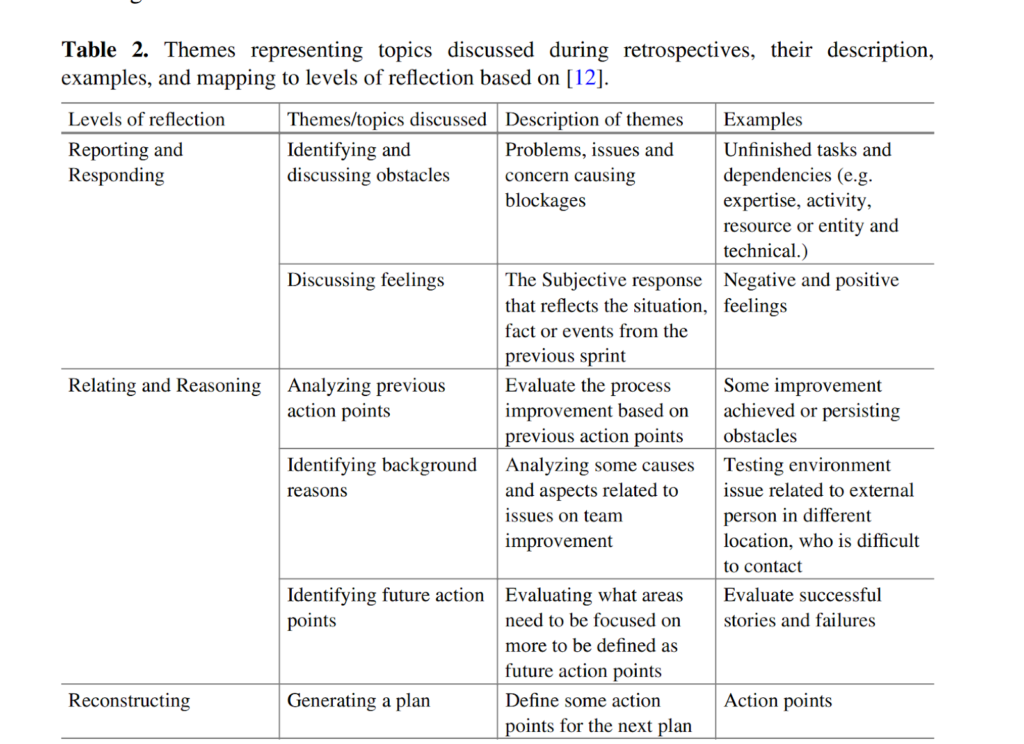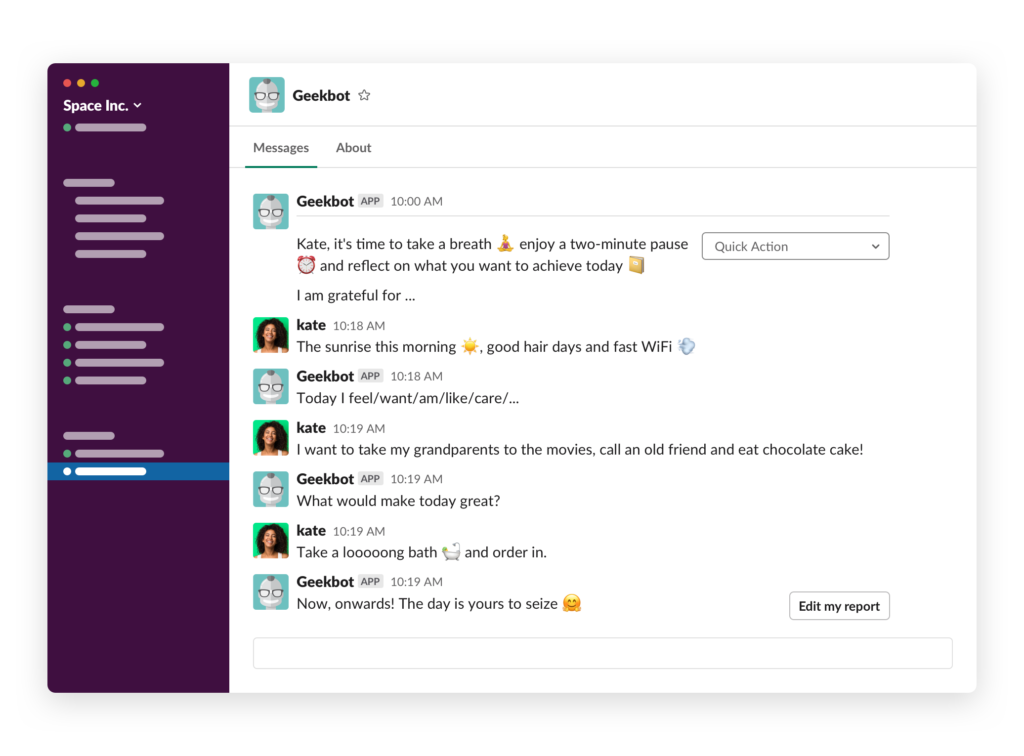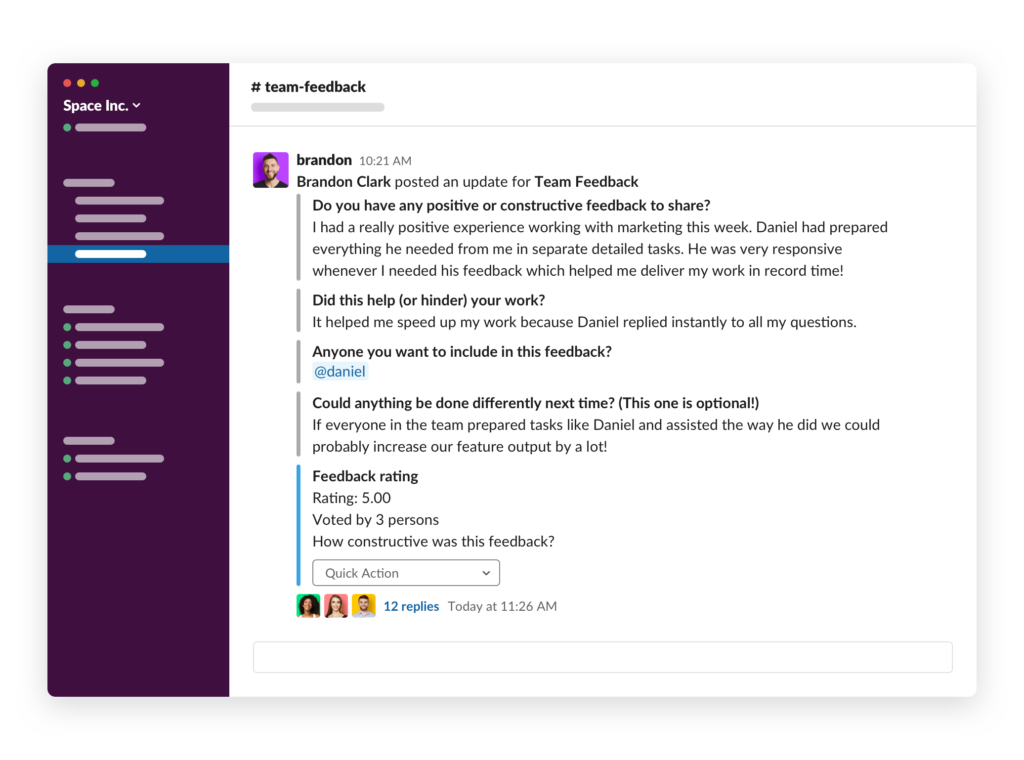In today’s fast-paced work environment, it’s easy to get caught up in the daily grind and lose sight of the big picture. Is your team giving it the most? Are they trusting each other? Can they be transparent in how they achieve goals?
Taking a step back, reflecting, and discussing as a team can not only improve overall performance but also increase morale and strengthen relationships. That’s the power of team reflection meetings.
In this article, we’ll explore what team reflections are, how to run team reflection meetings, and how to make the most of these valuable gatherings.
What Are Team Reflections?
Team reflections are specifically planned meetings where team members discuss and learn from recent work experiences by openly sharing their feeling and concerns through a reflective process or practice.
Often the goal during team reflections is to receive less filtered feedback than in formal meetings.
Reflective process, as defined by Osterman and Kottkamp [1], is a method for practitioners to enhance their understanding of their performance through increased self-awareness. By recognizing the nature and impact of one’s work, practitioners are presented with opportunities for professional growth and development.
In more scientific terms, a typical reflective process can be grouped into three stages:
- Reporting and responding
- Relating and reasoning
- Reconstructing
Or, simply put:
- Pick a theme
- Share feelings and/or observe and reflect on the experience
- Understand and pick action
A team can reflect on anything: the efficiency of inner communications, friction with other departments, client relationships, or a year’s progress.
There are several roles involved in conducting a successful team reflection meeting:
- Learners. People on the team who share lessons through the lens of personal experience.
- Facilitators. People who encourage sharing feedback with others and organizing it.
- Timekeeper. A person is responsible for equal input and timing.
- Note taker. Have someone on your team take notes or use note-taking tools that will preserve your ideas.
What’s The Difference Between Retrospectives and Team Reflections?
Two main differences between retrospectives and team reflection meetings are focus and scope.
Agile retrospectives focus on iteratively improving the team’s process and practices over an extended time frame and are attached to agile sprints, a team reflection meeting focuses on team members’ feelings and building self-awareness.
While retrospectives follow a rigid framework within a scope of a current sprint, team reflection meetings can be held at any time and focused on issues or team projects of any scale.
A team reflection meeting may discuss a specific project or the success of general communication and collaboration over an extended period of time, while an agile retrospective focuses on the end-of-sprint conversation and improvement of the team’s processes.
The standard format for conducting an agile retrospective meeting involves 5 stages:
- Setting the stage
- Gathering data
- Generating insight
- Deciding what to do
- Closing the retrospective
During the retrospective meeting, the team shares review and feedback, discusses issues to focus on and makes agreements on how to improve. Retrospectives are action-driven and frequent and are run at the end of the agile sprint to focus on its issues and roadblocks.
Although reflection and agile retrospectives have different origins, there’s a clear relationship between the two processes that can be combined into a single framework. A great retrospective incorporates elements of the reflection process, while an effective reflective process shares the actionability of retrospectives.
Use this table to better understand the difference between retrospectives and reflections:
| Retrospectives | Team Reflections | |
| How often | frequent (every sprint) | less often (every month) |
| Focus | short-term issues, team process | long-term, rapport, relationships |
| Means | observation, analysis | feelings, perception, reflection |
| Structure | rigid | free-flowing |
| Goal | increased productivity | increased self-awareness |
Benefits of Team Reflections
- Self-awareness. First and foremost, team reflections help team members to understand and accept their inner feelings and how they affect various aspects of their work.
- Better understand “Why”. Team reflections are great for understanding the “Why” behind the tasks or the lack of it. Ultimately, having purpose affects team motivation and morale, as research shows that purpose-driven teams are more productive.
- Expand mindset. Due to the non-rigid and free-flowing nature of a reflection meeting, team members are more likely to share new ideas and perspectives, adapting and developing more creative problem-solving approaches.
- Transparency. Lack of transparency in teams leads to a trustless environment where some demoralizing issues that affect productivity are never brought up. Frequent reflections in teams lead to more open team environments and ultimately boost trust in all other types of team communication.
- Alignment. Many work-related issues arise due to misaligned expectations towards projects and people’s roles within them. Reflection sessions are great for surfacing alignment issues within teams.
- Stronger relationships. An open work environment with high levels of self-awareness facilitates more profound relationships both within a team and outside of it, such as with clients and external shareholders.
How to Run Team Reflections
1. Pick Your Rhythm
How often you conduct your team reflection meetings is crucial for two reasons.
First, cadence defines the scope. A once-a-year reflection and once-a-month will focus on different things.
Seconds, team reflection meetings can’t be one-off and required at least some kind of frequency to be effective.
Your team likely won’t get used to being open in one session. On the other hand, too frequent reflections will be detrimental as your gram will quickly run out of things to discuss.
2. Pick Theme(s)
A fantastic quality of reflections is that you can reflect on pretty much anything.
Here are just some themes that you can explore and reflect on within your team:
- Highs and lows.
- Project experience
- Client relationships
- Department merging
- Company take-off
- Internal communications
- Excessive meetings
If you decide to pick several themes for one meeting, prioritize the topics and allocate enough time for each.
3. Identify Roles
Successful team reflections require some organization, so make sure you will have someone to monitor the time constraints, present questions, organize feedback, and take notes.
Most of these tasks can be done automatically, so use specific tools if you want to save time while keeping the process organized.
Without forcing people into a specific role, you should understand who are the facilitators and learners on your team because it simplifies the flow of a meeting: it will be easier to see if too much time is spent on organization and not reflecting and sharing experiences.
4. Pick a meeting structure.
Team reflections don’t have a defined structure, because the structure will typically depend on the topic and scope of a meeting.
Here are a few typical formats for a team reflection.
Free Discussion
For a free discussion format, you only need to prepare questions and decide on who will facilitate the meeting and who will be sharing their reflections.
A few questions to start you going:
- “What were the top priorities for the team this past year?”
- “Did you feel that you were focused on what was truly important?”
- “What were three standout moments from the year, and three challenges?”
- “Can you reflect on a situation where we could have handled things differently?”
- “How did you feel during that moment?”
- “Walk me through your thought process when making that decision.”
- “What factors contributed to that situation?”
- “What could have changed to avoid that experience?”
- “What did you hope to achieve, and did it align with the outcome?”
- “If you could go back, what would you do differently to change the result?”
- “What steps will you take in the future to ensure this doesn’t happen again?”
- “As we look ahead to the new year, what are your goals for taking on more of and letting go of?”
- “What accomplishment makes you feel the proudest?”
- “Can you share a time when you faced a challenge head-on and a time when you hesitated?”
- “What observations do you have about these experiences? Why do you think you approached them in these ways?”
Note: you can use Geekbot’s pizza toppings that will generate questions for your discussion automatically.
Stop/Start/Keep
The Stop/Start/Keep format involves each team member sharing three things they want to stop doing, three things they want to start doing, and three things they want to keep doing.
The format can be used to organize team reflections using a more actionable, but still relatively simple format:
- Each team member takes turns sharing their “Stop/Start/Keep” items.
- The team listens attentively and takes notes on the shared items.
- The team discusses each item, offering suggestions and feedback on how to improve or sustain positive practices.
- The team identifies common themes and creates action items to address areas for improvement.
- The team sets goals for what they want to achieve in the next period of time based on the insights from the reflection meeting.
Hybrid with Retrospective
Team reflections can be combined with retrospectives to add an extra layer of depth to them.
In this case, your team should keep the structure of retrospectives intact, while simply adding extra steps at every stage.
The goal here is to improve retrospectives by incorporating three levels of reflection (reporting and responding, relating and reasoning, and reconstructing) into the five steps of a standard agile retrospective.
In the table below that came from the research of evaluation reflection practices during traditional retrospectives, you can see how to embed the reflection process into every retrospectives stage.

Step 4. Wrap Up
Wrap up your team reflection by following the “Reconstructing” phase. After evaluating with your team what areas need to be focused on and defined as future action points, you can compile a list or an action plan that contains actions your team is willing to take to improve some aspect of their work experience.
How to Automate Team Reflections
The more regular your team’s reflections are, the more value they can bring to your team.
But we all know how daunting meeting preparations can be, and adding one more regular meeting to your plate might sound daunting.
Thankfully, there are tools that can help you run team reflections regularly with minimal supervision.
Geekbot, for example, can run regular team reflections directly in your company’s Slack or Microsoft Teams. Try Geekbot Reflection Journal Template !
Decide how often you want your team reflections to be, and at the designated time Geekbot will send team reflection questions to each participant via a direct message:

The team can ask questions at their own pace, and Geekbot will then gather all their replies in a specified channel. There you can follow up on each other replies, schedule 1-on-1s, and search through an entire history of reflections that Geekbot creates for your automatically

Regular team reflections will strengthen your team bond and help you resurface issues that would otherwise hinder your team’s productivity for months. Better yet, these reflections will not feel forced and allow your team members to connect with each other on a deeper level.
Let us know how you run reflections in your team, we love sharing success stories and learning!
Frequently asked questions
What Should Be Included in a Team Reflection?
A team reflection should include a review of the team's progress, successes, and challenges. It should also provide opportunities for team members to share their perspectives, experiences, and suggestions for improvement. Additionally, a team reflection should identify areas for growth and set goals for future progress.
How Do You Start a Team Reflection?
To start a team reflection, begin by setting a clear purpose and agenda for the meeting. Encourage open and honest communication, and provide a safe and supportive environment for all team members to share their thoughts and feelings.
What Are Good Questions for Team Reflection?
Good questions for team reflection include: What did we do well as a team? What could we have done better? What was most challenging for us? What did we learn? How can we apply this learning to future projects? What are our strengths as a team? What are our areas for improvement? What do we want to focus on moving forward?



